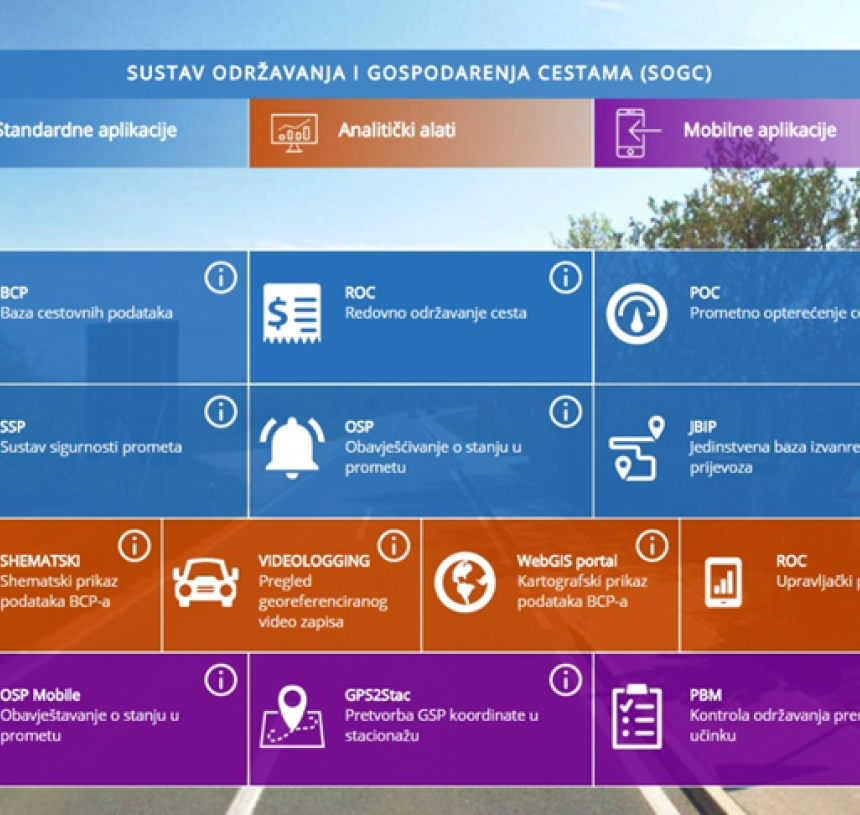
Road Asset Management System (RAMS)
Country: Croatia
Region: –
Client: Ministry of the Sea, Transport and Infrastructure – Republic of Croatia
Timing: 04.2018 – 12.2018
Contract value: n.a.
– State-of-the-art approach with emphasis on cost-effectiveness of road maintenance
– Levels of Service and Key Performance Indicators,
– Engineering standards for periodic maintenance and rehabilitation
– Impact on / inputs to planning and budget
– Identification of risks (such as damage due to storm or accident, works by third parties e.g. utilities; legislative changes; overloading; new roadside development etc.)
– Information/data sharing especially with the Ministry of Maritime Affairs, Transport and Infrastructure

The scope of the work is the following:
I) Review of existing systems
The future nationwide RAMS will not be a “greenfield project” as Croatian road administrators are already known to use, to some degree, Pavement Management Systems and other elements of a RAMS. The aim of the review is to establish a reliable recording of the current situation, to evaluate its adequacy and to assist in dimensioning of subsequent work on the development of the future RAMS
II) Identification of requirements for RAMS
Overview – shall comprise : (1) Organizational scheme (people, procedures and processes) & (2) Software and hardware
Data – comprise the following categories:
(i) Network links and nodes; (ii) Road hierarchy (official, functional, type); (iii) Type of asset (pavement, bridges, tunnels etc.); (iv) Location (GPS-based, inch geometric characteristics, or linear location) ; (v) Technical condition for pavement (cross-section information, pavement structure, history of overlays or other periodic maintenance interventions, surface type, pavement problems such as rutting, cracking, potholes, disintegration, bleeding, depressions, shoving, undulations, edge break etc., strength, structural, roughness and other readings), structures (individual piers, spans, abutments, bearings and expansion joints, approaches, bridge protection works, training works, bridge construction and maintenance history, design capacity, load capacity, hydrology, etc.), drainage and other elements; (vi) Service / functional characteristics (safety, quality-of-ride, traffic service level etc.) ; (vii) Usage regulations (e.g. heavy-vehicle restrictions) ; (viii) Traffic volumes (and composition, variations); (ix) Works record.








